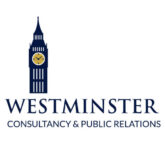Public trust in media has been dented by years of fragmented audiences, hyper-polarised feeds, and a constant stream of low-quality content. Yet trust hasn’t vanished—it has migrated. People now place confidence in sources that feel transparent, responsive, and close to their lived experience. For governments, NGOs, and brands, the challenge isn’t simply “getting coverage”; it’s earning credibility across platforms where attention is scarce and skepticism is the default.
Why trust is now a strategic asset
For policy actors, trusted communication can unlock cooperation during crises and reduce the cost of implementing reforms. For companies, it lowers reputational risk and improves campaign efficiency. For NGOs, it translates evidence into action. In 2025, credibility isn’t won by louder messaging; it’s built by visible methods, clear corrections, and meaningful dialogue with the communities you claim to serve.
“Trust isn’t a slogan—it’s the output of consistent, verifiable habits.”
What changed—and why traditional playbooks struggle
Audiences no longer move in lockstep through a few evening bulletins. They navigate micro-communities: niche newsletters, encrypted chats, creator channels, and local influencers. Recommendation algorithms reward engagement over nuance; AI tools accelerate both high-quality analysis and low-effort misinformation. The result is an environment where authority must be demonstrated, not assumed. (My opinion: assuming “the facts speak for themselves” is the biggest strategic mistake institutions still make.)
Six strategies to rebuild trust (and measure it)
1) Practice “transparency by design”
Publish your sources, funding, conflicts of interest, and methodology in plain language. Make corrections highly visible and timestamped. Add editor’s notes when headlines evolve. When stakeholders can see how you reached a conclusion, they’re more likely to believe what you concluded.
2) Pair data with human stories
Evidence persuades; stories travel. Package key findings with short case profiles, maps, and explainer threads.
Use accessible formats—carousel posts, 60-second expert clips, and one-page briefs—so the audience can share without misrepresenting the substance.
3) Build audience intimacy, not just reach
Prioritise owned channels (newsletters, WhatsApp/Telegram broadcasts, community forums) where you can answer questions and show your working. Host regular AMAs with experts and frontline practitioners. Trust grows when audiences feel talked with, not talked at.
4) Partner for credibility
Collaborate with reputable universities, think tanks, newsrooms, and civil-society groups. Cross-publish methods and replicate each other’s analyses where appropriate. Third-party validation—and the willingness to be peer-reviewed—signals confidence in your own work.
5) Prepare for the bad day
Crisis communication is a trust test. Pre-agree escalation paths, spokesperson roles, and evidence packages (timelines, primary documents, data exports). In a controversy, respond fast with facts—and follow quickly with context, independent corroboration, and any corrective action.
6) Measure the right things
Move beyond vanity metrics. Track attention quality (engaged reading time, completion rates), credibility indicators (correction acceptance, expert citations, earned media tone), and community signals (question/answer resolution, sentiment among priority audiences). Tie these to management KPIs so trust is managed, not admired.
Guardrails for AI-generated content
AI can speed up research and production, but it can also undermine confidence if used opaquely. Disclose when AI assists with drafting or translation; keep a human-in-the-loop for verification and ethics; and store audit trails showing what models were used and how outputs were checked. Where feasible, add provenance tags or watermarks to discourage manipulation.
Conclusion
Rebuilding trust is less about a grand narrative and more about repeatable habits—transparent methods, honest corrections, engaged communities, and evidence that stands up to scrutiny. Organisations that operationalise these habits will not just weather the trust recession; they’ll turn credibility into a durable competitive advantage.
My opinion: if you choose only one change, make it radical transparency of method and correction—the compounding effect on credibility is worth more than any single media placement.

